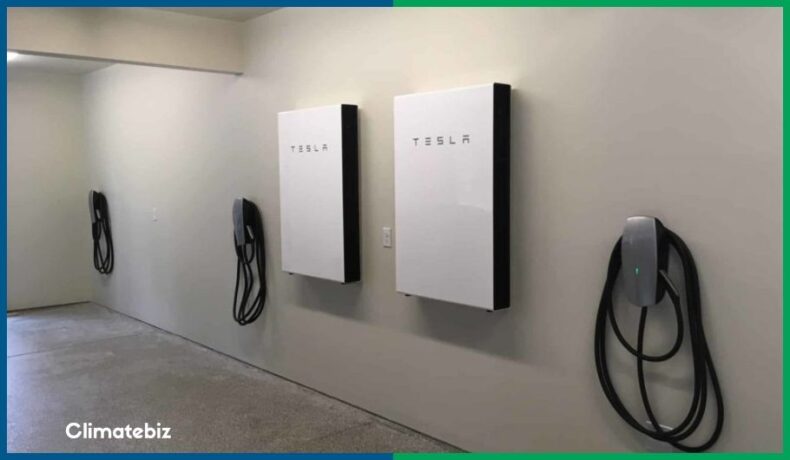The last situation you want to find yourself in is waking up in darkness and finding that —low and behold — you’re the victim of Tesla Powerwall theft.
Just imagining this scenario is enough to give anybody a shiver down the spine!
But can a Tesla Powerwall be stolen? And is Tesla Powerwall theft covered by your insurance? Or will you be left stranded for weeks?
This article answers your burning questions about Tesla Powerwall theft, including how to prevent a potential incident and what insurance will or won’t cover.
Table of Contents
Can A Tesla Powerwall Be Stolen?
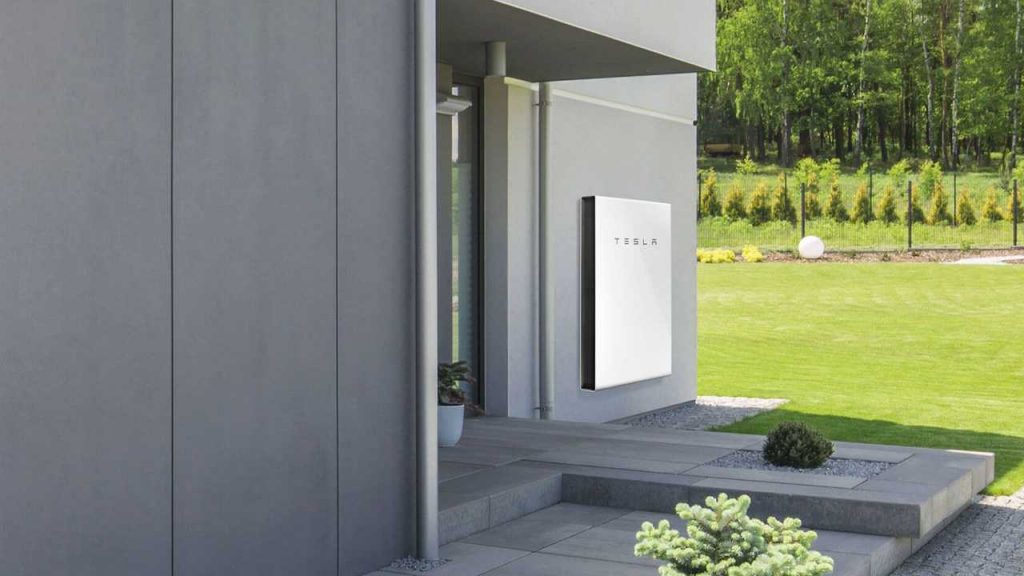
Source: InsideEVs
A Tesla Powerwall is a popular addition to your home energy system.
However, crime statistics are a factor you live with daily, including home intrusion and theft.
Unfortunately, a home energy system such as your Tesla Powerwall can fall victim to these types of theft.
For example, in 2020, this was the exact ProSolar faced this scenario at its warehouse in the Caribbean. Intruders had broken in and stolen Tesla Powerwall home batteries to the value of $45,000!
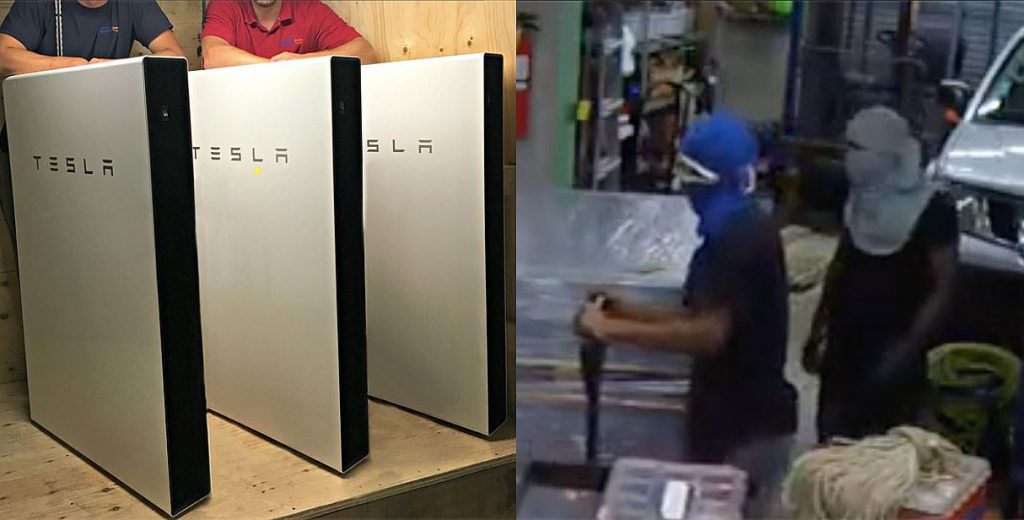
Source: Teslarati
Video footage revealed the moment the two men broke into the premises. Thankfully Tesla successfully traced the location of the Powerwalls once they were alerted to the crime.
Sadly, the perpetrators caused severe damage to the Powerwalls. They were dragged across the floor, rendering them non-functional. In the end, they were taken to Tesla for recycling.
Tesla Powerwall Theft Is Pretty Challenging
As devious as these criminals were, they would not have been able to use the Powerwalls. Why? Because you need various codes and specialized equipment for the batteries to be of any use — a small but essential detail the thieves missed when carrying out the crime.
According to ProSolar’s chief technology officer, there are several reasons why Tesla Powerwall theft is not worth the trouble, including:
| Reason | Explanation |
|---|---|
| You can’t just switch them on and off | These Powerwalls need additional equipment to be turned on or off. In other words, there isn’t just a button you can press. |
| You need a Certification ID | Tesla Powerwalls need a Certification ID to be registered and work, |
| Tesla can trace your cell card | Once the Powerwall powers up, Tesla can track its location and will know where to find the stolen goods. |
| The batteries are high voltage | Because the Powerwalls contain a very high battery voltage, there is an increased risk of an accident. |
| AC coupling | The Tesla Powerwall uses AC power, which can’t be used like a standard battery. It is specialized and can’t work with any other independent inverter available. |
| There isn’t much valuable scrap metal inside | Most batteries are made of lithium cells and barely any material, such as copper. This means that scrap yards aren’t keen to buy them and don’t offer much value when stripped. |
| Troubleshooting | Say all other speedbumps could be avoided; the software will need to be updated at some point. If this isn’t done, then they will eventually stop functioning properly. |
So the answer is yes! Your Tesla Powerwall can indeed be stolen. It may not be helpful, but it can be stolen.
Related Reading: Top 7 Tesla Powerwall Alternatives (A Buyers Guide)
How To Prevent Your Tesla Powerwall From Being Stolen
Although there isn’t a foolproof way to stop theft, you can certainly make it a little more difficult for unwanted visitors to enter your property and take what belongs to you
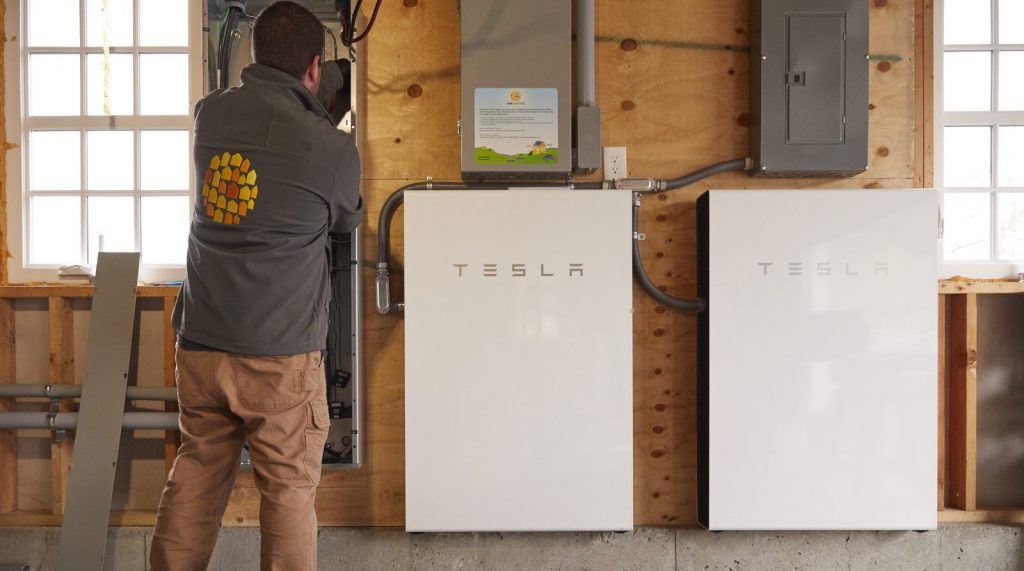
Source: SunCommon
Here are a few tips for you:
- Keep your Powerwall inside your home, a garage, or a basement — this makes it harder to identify by would-be criminals.
- Lock the gate or door that provides access to your Tesla Powerwall — this will make it quite challenging to get to the home energy system.
- If you’re able to have pets, we advise getting a watchdog.
- Try to update your software as often as possible to keep the location/information of your Powerwall up to date with Tesla.
In addition to these steps, you can consider certain types of surveillance (such as cameras). These keep an eye on your home energy system and can be monitored remotely.
Related Reading: LG Energy Solution Vs. Tesla Powerwall (Which battery is best for you?)
Will Insurance Cover Tesla Powerwall Theft?
The Tesla Powerwall warranty does not include Tesla Powerwall theft or theft of its components. This includes damage done by you, intruders, or weather events.
However, Tesla does have access to your Powerwalls location via the cloud, so they will most likely be able to track it down for you and provide the necessary information for the police to apprehend any suspects successfully.
However, independent certified Powerwall installers may offer specific insurance coverage or specialized plans.
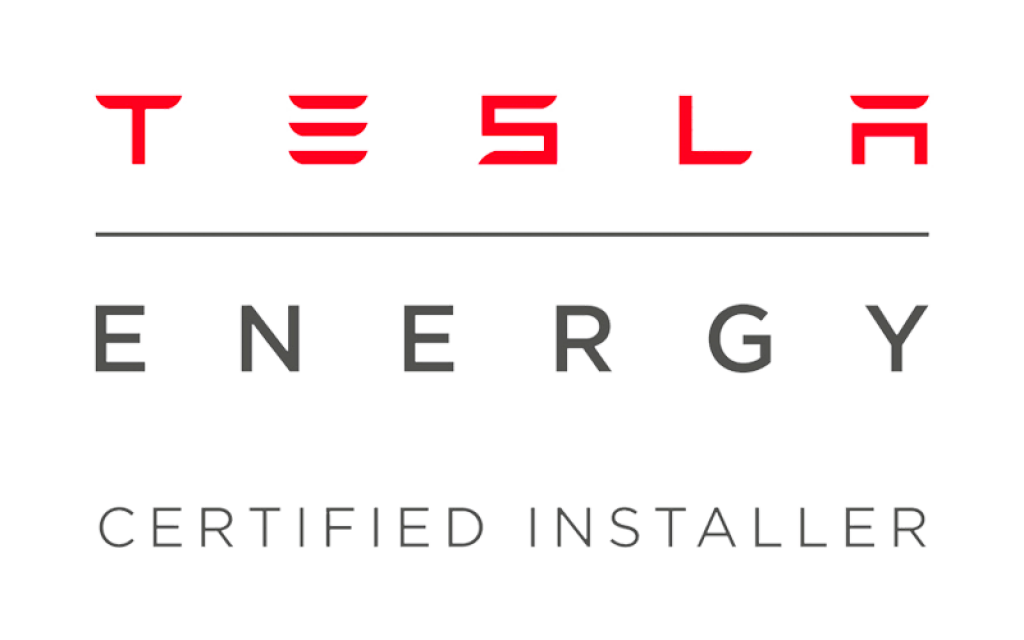
Source: ProSolar Systems Caribbean.
This depends entirely on the company, and you will need to research and read up on what is available or on offer in your area.
Certified installers can be found here!
Final Thoughts
Unsurprisingly, you can never fully protect your property, even with green energy.
Thankfully, Tesla Powerwalls are not of much use when stolen. This is due to their reliance on other system components and structures and their composition.
Additionally, you put measures in place to make your system more secure, such as beefing up security and keeping your system software up to date.
You may also want to consider local certified Powerwall installers and find out what insurance plans they offer for an even better safety net!
If you want to share your thoughts or ask us a question, please feel free to reach out to us in the comments section below! Alternatively, visit our forum or follow us on Twitter!

